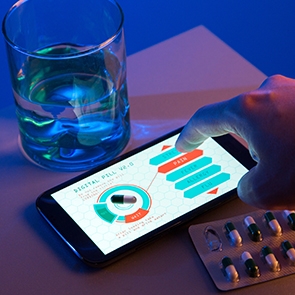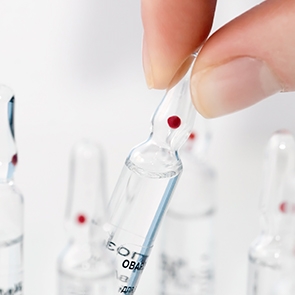Traditional medications have long struggled to deliver a desirable level of effectiveness for patients. The Personalized Medicine Coalition suggests that efficacy rates for drugs can vary from 25% to 60%. Drug compliance is also a major concern – a number of studies have shown that compliance is often only around 50%, a figure in part driven by negative side effects. While drug treatments often deliver significant improvements in quality of life, many patients continue to struggle with the compromises that come with taking a drug designed to be one-size-fits-all.
To address these deficiencies, medical technology is turning to personalized medicine: medications designed to work for the individual. The US federal government has shown recent support for technological innovations in healthcare, as demonstrated by its commitment to the 21st Century Cures Act, the Precision Medicine Initiative and the Cancer Moonshot.
About a quarter of novel drugs approved from 2014 to 2017 were personalized medicines, which has provided unique opportunities for innovative therapeutic and diagnostic companies. There are now 32 approved companion diagnostics (not including other FDA-cleared, pharmacogenetic assays) that can identify individual differences in drug metabolism and pave the way forward for personalized medical interventions.
As shown by results over the past half-dozen years, sorting patients based on their genome using evolving technologies (such as DNA sequencing and other biomarkers, as well as patient demographics/history) has the potential to overcome a number of problems – including efficacy and safety concerns. These technologies may also reduce unnecessary treatments and prevent spiraling treatment costs, as well as save on R&D expenses for developers and manufacturers.
Acknowledging the challenge of personalizing medicine
While many believe that personalized medicine (along with the companion diagnostics to implement it) will be the best way to achieve better and cheaper healthcare, there are still a number of (real or perceived) barriers (see Figure 1). These barriers drive drug research and development back towards the one-size-fits-all approach, rather than encourage the development of personalizable treatments. For companies already investing heavily in traditional drug development approaches, it may be difficult to imagine taking on these new challenges.

Figure 1: The dynamics of personalized drugs and companion diagnostics
The Tufts Center for the Study of Drug Development estimates that the R&D cost for developing a new drug is between $1.4 billion and $2.9 billion – a huge investment for any organization. In addition, Health Affairs has highlighted the growth of ‘step therapy’ (trying one lower-cost drug before another more expensive drug, also sometimes called ‘fail first’) – an approach that indirectly reins in innovation and encourages the status quo. Step therapy grew to 73% in 2013 (up from 27% in 2005) among employer-sponsored healthcare plans, despite studies showing that, in a number of cases, delaying treatment can increase mortality or worsen other outcomes. So, how can medical technology businesses overcome these challenges to achieve the promise of personalized medicine?
Targeting future research efforts and collaborating strategically for success
Medical technology companies need to focus their energies on developing and utilizing tools that can match patients to the right drug (or other intervention) at the right time. To do this, they need to harness the potential of diagnostic and prognostic tools and resources, such as genome sequencing, novel protein and metabolic biomarkers, and, in the future, machine learning and artificial intelligence. They also need to identify the next research capacity bottleneck (rather than chasing their current competitors) so that they can lead the way with these evolving technologies.
Targeted investment in developing technologies, such as genome-based therapeutic technologies, may help with screening for compounds that have broader uses for targets with low genetic variation. Using state-of-the-art tools to target novel biomarkers may also be pivotal to success (to find out more about novel biomarkers, take a look at my White Paper on the topic here). Other valuable investments might explore blood-testing technologies to replace invasive biopsies (so-called liquid biopsies). Accumulating data on other biomarker types, such as immunoassays and metabolomics, could also provide an invaluable data bank for future research.
Medical technology companies will need to work with pharma and biotech firms early to identify, validate and gain approval for companion diagnostics. In addition, identifying companion diagnostics early in the drug development process may prove useful for selecting patients during clinical studies and getting timely co-approval during the regulatory process. Ultimately, creating the infrastructure for efficient trials will enable organizations to adjust their approach and work towards nichebusters rather than blockbusters.
Finally, medical technology companies will also need to develop the conversation with medical device companies to identify additional areas where a personalized approach may be effective. Medical device trials could also benefit from better patient selection. By pursuing complex health economic analyses in partnership with a range of therapeutic, diagnostic and medical device firms, as well as potential competitors, medical technology companies can drive and take charge of innovations in personalized medicine.
The application of personalized medicine may not only improve patient outcomes and lower healthcare costs, but also provide valuable business opportunities for perceptive medical technology firms. Organizations utilizing machine learning, artificial intelligence and other big-data technology can also contribute to personalized medicine, and benefit commercially as well. If your organization is looking to position itself at the forefront of developing medical technologies, contact a-connect today to find out how we can support your work.





